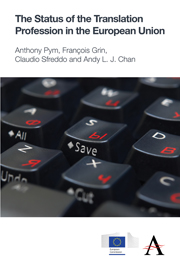Here we sketch out case studies of the way the various signalling mechanisms interact in Germany, Romania, Slovenia, the United Kingdom, and Spain, as well as the external comparison countries the United States, Canada, and Australia.
The case studies broadly address the following questions:
– What is the relationship between academic training and professional certification with respect to the recruitment of translators?
– What has been the historical development of these signalling mechanisms in the field of translator qualifications?
We look at the general language policy of each country, the main features of academic qualifications, the professional associations, and the specific systems in place for sworn or authorised translators. In each case, we propose some tentative conclusions about the ways academic and professional signals are working, especially in relation to the size of each potential market.
The United States, Canada, and Australia have been selected as comparison bases because they have all seen close critical attention to accreditation and certification systems in very recent years.
Germany
Germany is a significant case study because of the specific weight of the German economy within Europe, its successful export orientation, its high levels of foreign-language competence, the presence of immigrant languages, and a well-established and generally successful system of translator training and associative representation.
